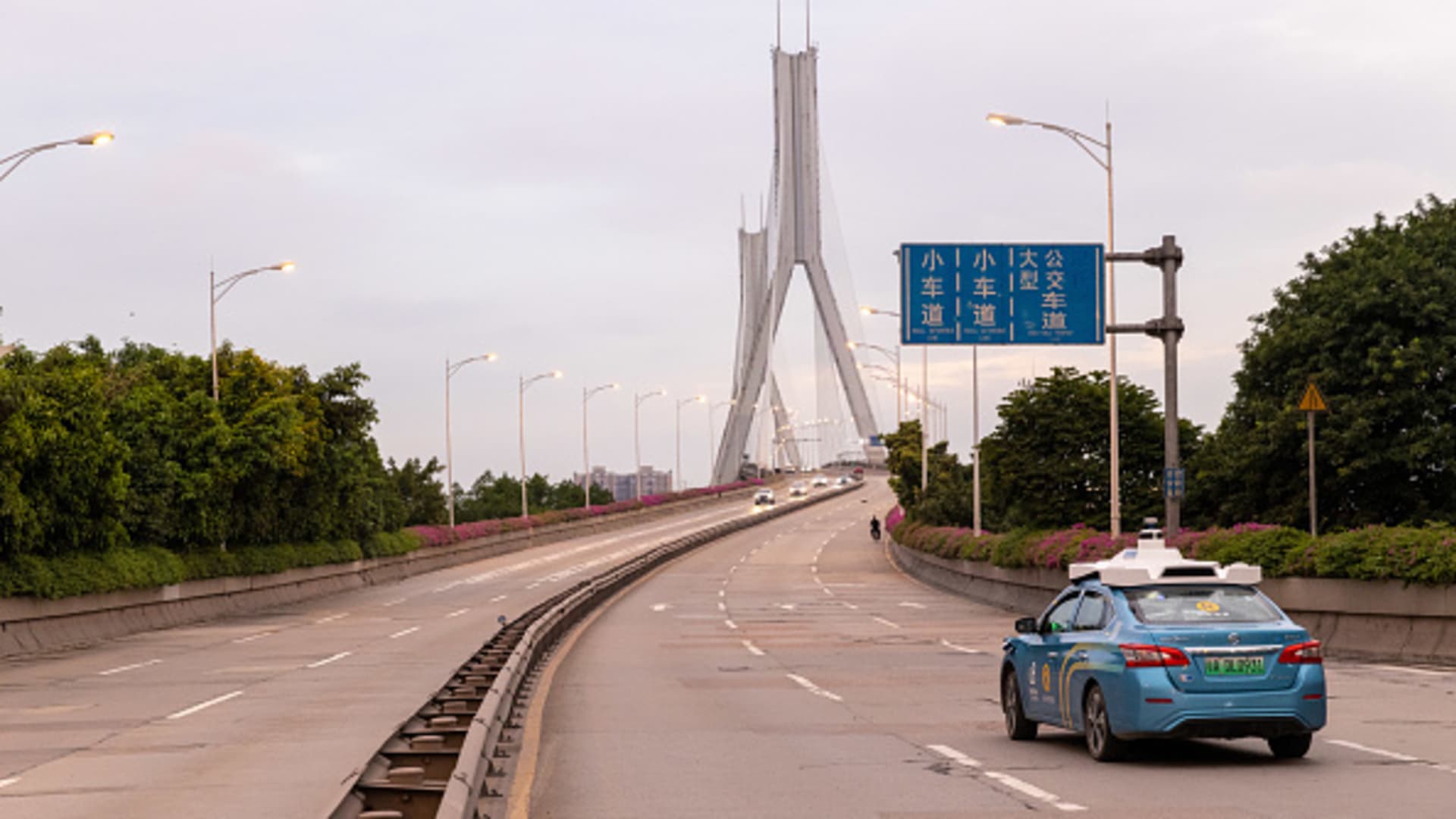BEIJING — While governments may be wary of driverless cars, people want to buy the technology, and companies want to cash in.
It’s a market for a limited version of self-driving tech that assists drivers with tasks like parking and switching lanes on a highway. And McKinsey predicts the market for a basic form of self-driving tech — known as “Level 2” in a classification system for autonomous driving — is worth 40 billion yuan ($6 million) in China alone.
“L2, improving the safety value for users, its commercial value is very clear,” Bill Peng, Hong Kong-based partner at McKinsey, said Monday in Mandarin translated by CNBC. “Robotaxis certainly is a direction, but it doesn’t [yet] have a commercialization result.”
Robotaxi businesses have made strides in the last several months in China, with Baidu and Pony.ai the first to get approval to charge fares in a suburban district of Beijing and other parts of the country. Locals are enthusiastic — Baidu’s robotaxi service Apollo Go claims to clock roughly more than 2,000 rides a day.
But when it comes to revenue, robotaxi apps show the companies are still heavily subsidizing rides. For now, the money for self-driving tech is in software sales.
Lucrative tech
Investment analysts from Goldman Sachs and Nomura point to opportunities in auto software itself, from in-car entertainment to self-driving systems.
Last week, Chinese self-driving tech start-up WeRide said it received a strategic investment from German engineering company Bosch to produce an assisted driving software system.
The goal is to jointly develop an L2/L3 system for mass production and delivery next year, Tony Han, WeRide founder and CEO, told CNBC. L4 designates fully self-driving capability under specific circumstances.
“As a collaborator, we of course want this sold [in] as many car OEMs in China so we can maximize our [revenue and] profit,” he said, referring to auto manufacturers. “We truly believe L2 and L3 systems can make people drive cars [more] safely.”
In a separate release, Bosch called the deal a “strategic partnership” and said its China business would provide sensors, computing platforms, algorithm applications and cloud services, while WeRide provides the software. Neither company shared how much capital was invested.
The deal “is very significant,” said Tu Le, founder of Beijing-based advisory firm Sino Auto Insights. “This isn’t just a VC that sees potential in the overall market and invests in the sector.”
He expects the next step for commercialization would involve getting more of WeRide’s technology “bolted on the partner OEM’s products in order to get more pilots launched in China and experimenting with paid services so that they can tweak business models and understand the pricing dynamics and customer needs better.”
WeRide has a valuation of $4.4 billion, according to CB Insights, with backers such as Nissan and Qiming Venture Partners. WeRide operates robotaxis and robobuses in parts of the southern city of Guangzhou, where it’s also testing self-driving street sweepers.
CEO Han declined to speak about specific valuation figures. He said that rather than needing more funds, his main concern was how to reorganize the start-up’s engineers.
“Because Bosch is in charge of integration, we have to really spend 120% of our time to help Bosch with the integration and adaptation work,” Han said. WeRide has yet to go public.
The China stock play
For publicly listed Chinese auto software companies, Goldman’s thematic picks for autonomous driving include ArcSoft and Desay SV.
An outsourcing business model in China gives independent software vendors more opportunities than in the United States, where software is developed in-house at companies like Tesla, the analysts said. Beijing also plans to have L3 vehicles in mass production by 2025.
“Auto OEMs are investing significantly in car software/digitalization to 2025, targeting US$20bn+ of obtainable software revenue by decade-end,” the Goldman analysts wrote in mid-March.
They estimate that for every car, the value of software within will rise from $202 each for L0 cars to $4,957 for L4 cars in 2030. For comparison, the battery component costs at least $5,000 today. By that calculation, the market for advanced driver assistance systems and autonomous driving software is set to surge from $2.4 billion in 2021 to $70 billion in 2030 — with China accounting for about a third, the analysts predict.
In September, General Motors announced it would invest $300 million in Chinese self-driving tech start-up Momenta to develop autonomous driving for GM vehicles in the country.
“Customers in China are embracing electrification and advanced self-driving technology faster than anywhere else in the world,” Julian Blissett, executive vice president of General Motors and president of GM China, said in a release.
